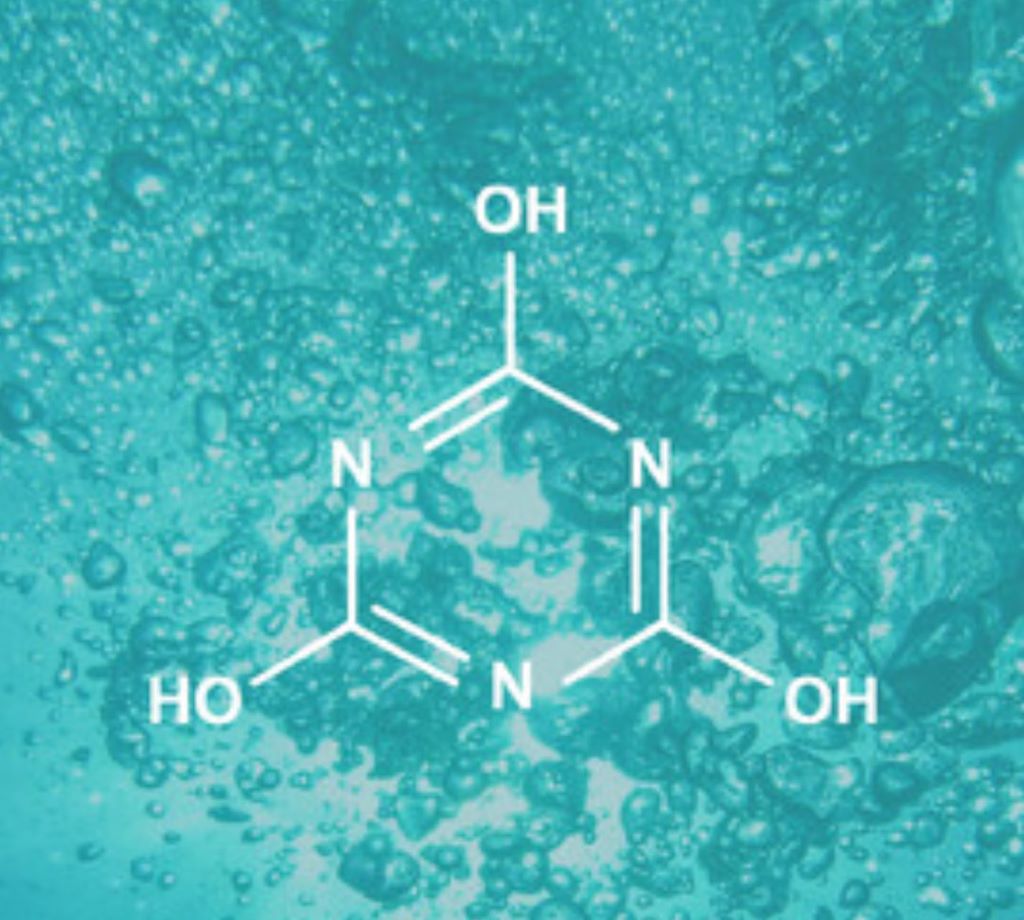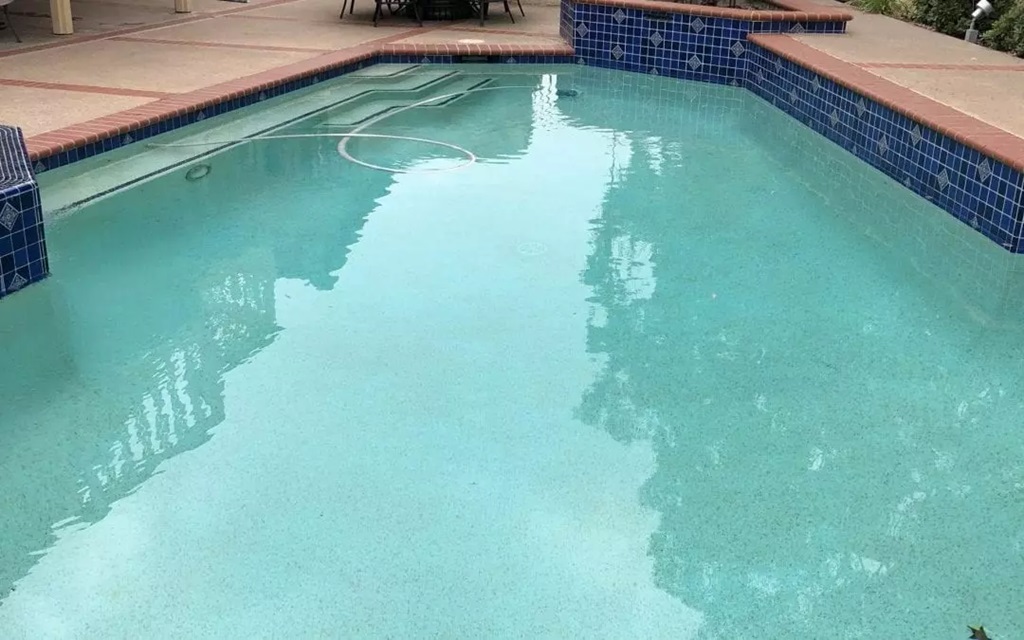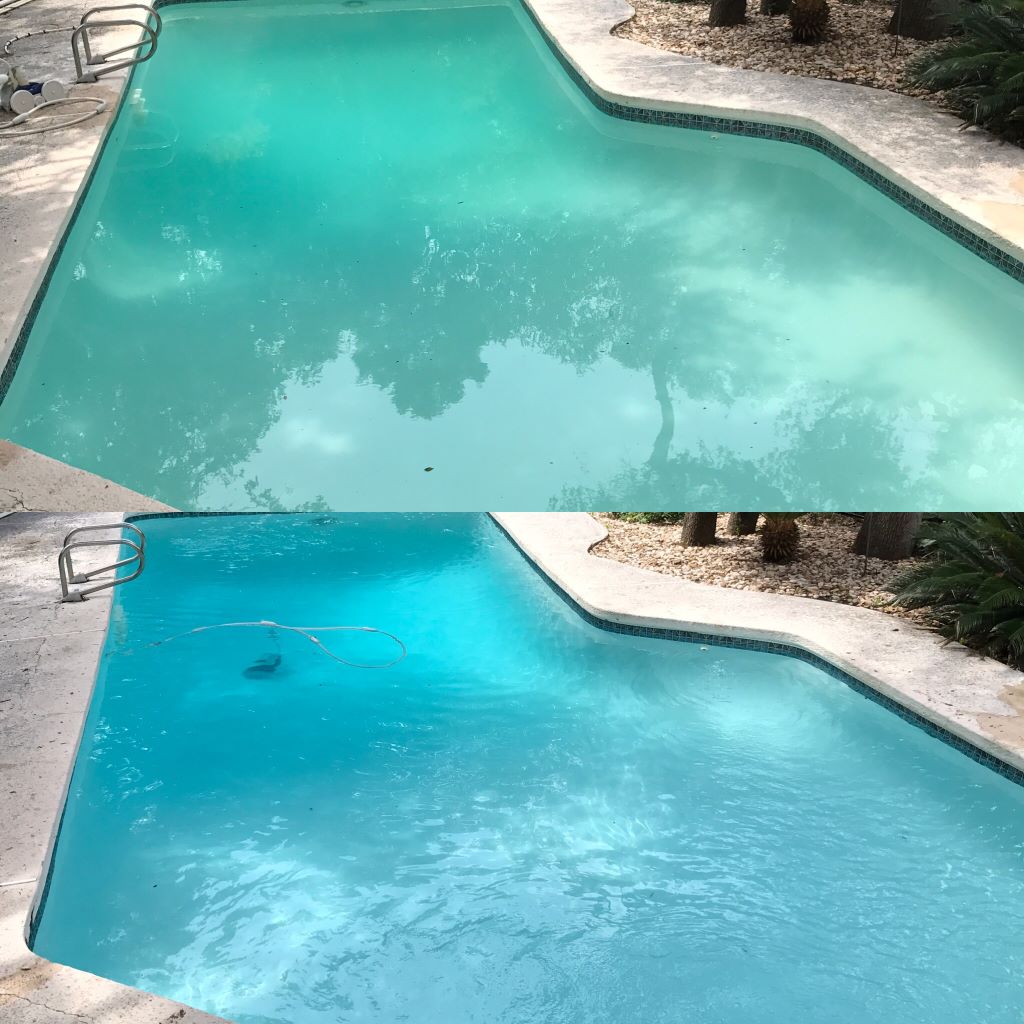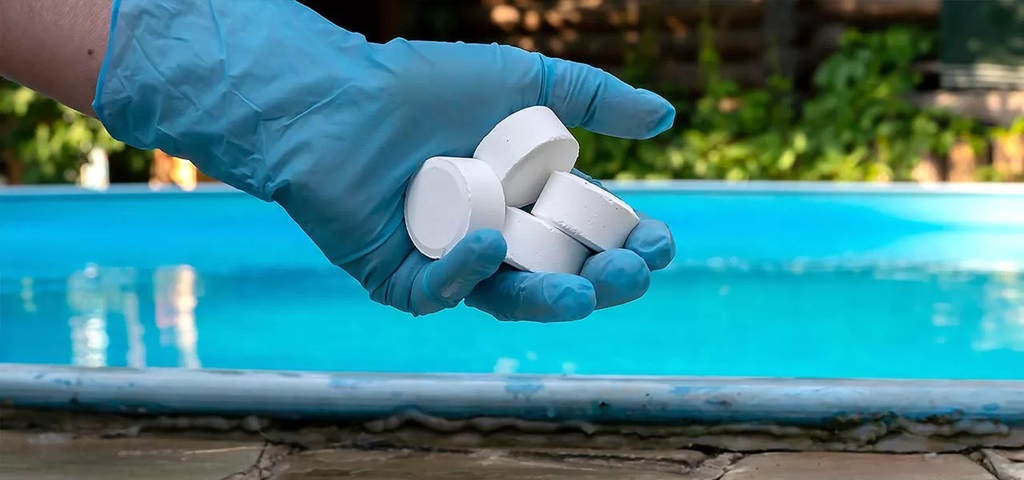Cyanuric acid, also known as CYA, is a chemical commonly added to swimming pool water to help stabilize chlorine levels. When CYA levels get too high, it can lead to chlorine being less effective at disinfecting pool water. Here’s a look at what cyanuric acid is, how it gets high, problems caused by high CYA, and how to lower and maintain cyanuric acid high in pool in proper levels.
What is Cyanuric Acid?
Cyanuric acid, or CYA, is a chemical that helps reduce the degradation of chlorine in pool water from UV rays. It essentially acts as a “sunscreen” for chlorine, allowing the sanitizer to last longer instead of being used up quickly by the sun. This helps maintain proper chlorine levels.
CYA is often added to pool water using chlorine tablets or sticks that contain the stabilizer. It can also be added directly as a liquid or powder. CYA levels are typically kept between 30-50 ppm (parts per million) in outdoor pools. Indoor pools don’t require cyanuric acid addition since UV rays aren’t a factor.
How Does CYA Get High?
There are a few primary ways that cyanuric acid levels get elevated over time:
1. Overuse of Stabilized Chlorine
Using too many chlorine tablets or sticks with CYA added is a common cause of high readings. These products contain both trichlor chlorine for sanitizing and cyanuric acid for stabilizing. As more of these chemicals are added over a swim season, the CYA concentration gradually increases.
2. Direct CYA Additions
In some cases, cyanuric acid may be added to pool water by itself in liquid or powder form to get a quick boost. This can rapidly raise CYA if too much is added. The pool operator should carefully follow the manufacturer’s directions to avoid overshooting the ideal range.
3. Lack of Dilution
One of the primary ways that CYA levels are reduced is by adding fresh water to dilute the concentration. This typically occurs from backwashing filters, draining some water, swimmer splashing, and rainwater adding to uncovered pools. If none of these dilution methods occur for a long time, CYA can concentrate and rise.
4. High Evaporation
In arid climates with high rates of water evaporation from the pool and sun exposure, cyanuric acid levels tend to increase. As total water volume decreases from the loss while the CYA amount remains constant, concentrations will steadily rise.
5. Initial Overdose
Improper initial filling and balancing of a new pool can lead to excessive CYA right from the start. This often occurs from adding too much at one time beyond the recommended 50 ppm maximum. Starting off with high levels makes it easy for concentrations to become very elevated later.
Problems Caused by High Cyanuric Acid
When cyanuric acid gets too high, it can lead to some problematic conditions:
1. Reduced Chlorine Efficacy
The key consequence of elevated CYA is that it causes chlorine to be less effective at killing germs and algae. Research shows that the higher the CYA level, the weaker the disinfecting power of the chlorine concentration present.
2. Chlorine Lock
With very high CYA above 100 ppm, a “chlorine lock” effect can occur. This is where nearly all sanitizing benefits of chlorine are deactivated, regardless of the chlorine level. The bound chlorine molecules cannot properly work to oxidize and eliminate contaminants.
3. Algae Growth
The reduced disinfection capacity of chlorine when CYA is very high can allow green, black or mustard algae to grow. Since the chlorine cannot properly prevent it at excessive CYA levels, algae can bloom and create green water.
4. Eye Irritation
High cyanuric acid has been linked to ocular irritation for swimmers in some cases. Prolonged exposure may lead to puffy, red eyes presumably caused by too little chlorine in the water to deactivate irritants.
5. Added Costs
Getting CYA back down requires draining and diluting pool water, which uses additional water. Running the filter more also increases electricity costs. And more chlorine products may be required to maintain adequate residuals.
6. Filter Clogging
As more contaminants get past the weakened chlorine barrier, it can lead to faster filter clogging from organic debris. This requires more frequent cleanings and backwashes, shortening filter lifespans.
7. Saltwater Issues
In saltwater pools that use chlorine generators, high CYA can lower chlorine production efficiency. The generators have to work harder to produce adequate chlorine, which shortens cell lifespans.
How to Lower Cyanuric Acid
If your pool’s cyanuric acid reading is too high, here are the best options to lower and dilute it:
Partial Drain and Refill
Draining out some of the over-concentrated pool water and replacing it with fresh water is the fastest way to dilute and reduce CYA. How much you drain depends on the current level and pool size.
Use No CYA Chlorine
Switch to using plain chlorine bleach or liquid without CYA for disinfection until readings drop sufficiently. Stop using dichlor or trichlor tablets to avoid further accumulation.
Run Filter Continuously
Running the pool filter 24/7 will gradually dilute the concentration over time from backwashing and replacing water. This passive dilution method requires no draining.
Leave Pool Uncovered
Leaving an in-ground vinyl liner or concrete pool uncovered allows rainwater to dilute the CYA when showers occur. The sun also continues degrading it gradually.
Add Water Frequently
Actively adding freshwater regularly avoids stagnant conditions and provides ongoing dilution. Adding a few inches after swimming dilutes CYA slowly over time.
Use Pool Floc
Floc binds to CYA molecules and sinks them to the bottom for vacuum removal when cleaning the pool. However, this is slower than draining and filtering.
Once the CYA level is lowered to under 100 ppm, chlorine efficacy is restored and you can resume using stabilized chlorine products like tablets. Then follow the steps below to keep CYA in check going forward.
How to Maintain Proper CYA Levels
Here are some tips to keep cyanuric acid high in the pool within the ideal 30-50 ppm range in your pool after lowering it:
- Test CYA weekly and before adding more.
- Limit the use of dichlor and trichlor tablets.
- Alternate stabilized and plain chlorine products.
- Maintain consistent dilution with fresh water.
- Watch for evaporation in hot weather.
- Drain and partially refill pool water seasonally.
- Use floc regularly to remove some CYA buildup.
- Don’t rely on CYA for indoor or covered pools.
- Follow the manufacturer’s directions on chemical addition.
- Consult a pool pro if having trouble managing levels.
FAQs
How do I test cyanuric acid levels?
Use a water test kit or test strips that include CYA testing. CYA-only kits are also available. Be sure to test separately from free chlorine since they can interfere.
How often should I test CYA?
Test CYA weekly to spot increases before it gets too high. Test more often in very hot weather when evaporation rapidly concentrates chemicals.
What’s the ideal CYA level?
30-50 ppm is recommended for outdoor pools to balance chlorine stabilization without negatively impacting performance. Indoor pools can have very low or no CYA added.
How do I remove cyanuric acid without draining?
Floc chemicals bind to CYA for removal when vacuuming pool. Running filter a lot and leaving pool uncovered also provide passive dilution over time. But draining is fastest.
How much pool water should be drained to lower CYA?
Generally draining 10-25% of total water volume and refilling is sufficient to reduce high cyanic acid levels. More may be needed for severe overages.
Does rain lower cyanuric acid?
Yes, rain helps dilute and lower CYA levels gradually over time as long as the pool is uncovered. Heavy rains make a bigger impact than light showers.
In summary
Cyanuric acid is an important pool chemical that helps stabilize chlorine from the sun’s rays. But cyanuric acid high in pool can make chlorine less effective and lead to issues like algae growth, irritation, and added costs. The main ways that cyanuric acid gets elevated are overuse of dichlor and trichlor, lack of dilution, and evaporation concentration. If your pool’s CYA reading is above the ideal 30-50 ppm range, draining some water and refilling is the quickest way to lower it. Failing to address high CYA levels not only jeopardizes water quality but also poses potential health risks, making it one of the compelling reasons to avoid swimming in a home pool with imbalanced chemical composition. Maintaining proper ongoing levels necessitates limiting the use of stabilized chlorine, routine testing, and consistent dilution methods to ensure a safe and enjoyable swimming environment. With close monitoring and control of cyanuric acid, your pool water will stay sparkling clean all season long.






